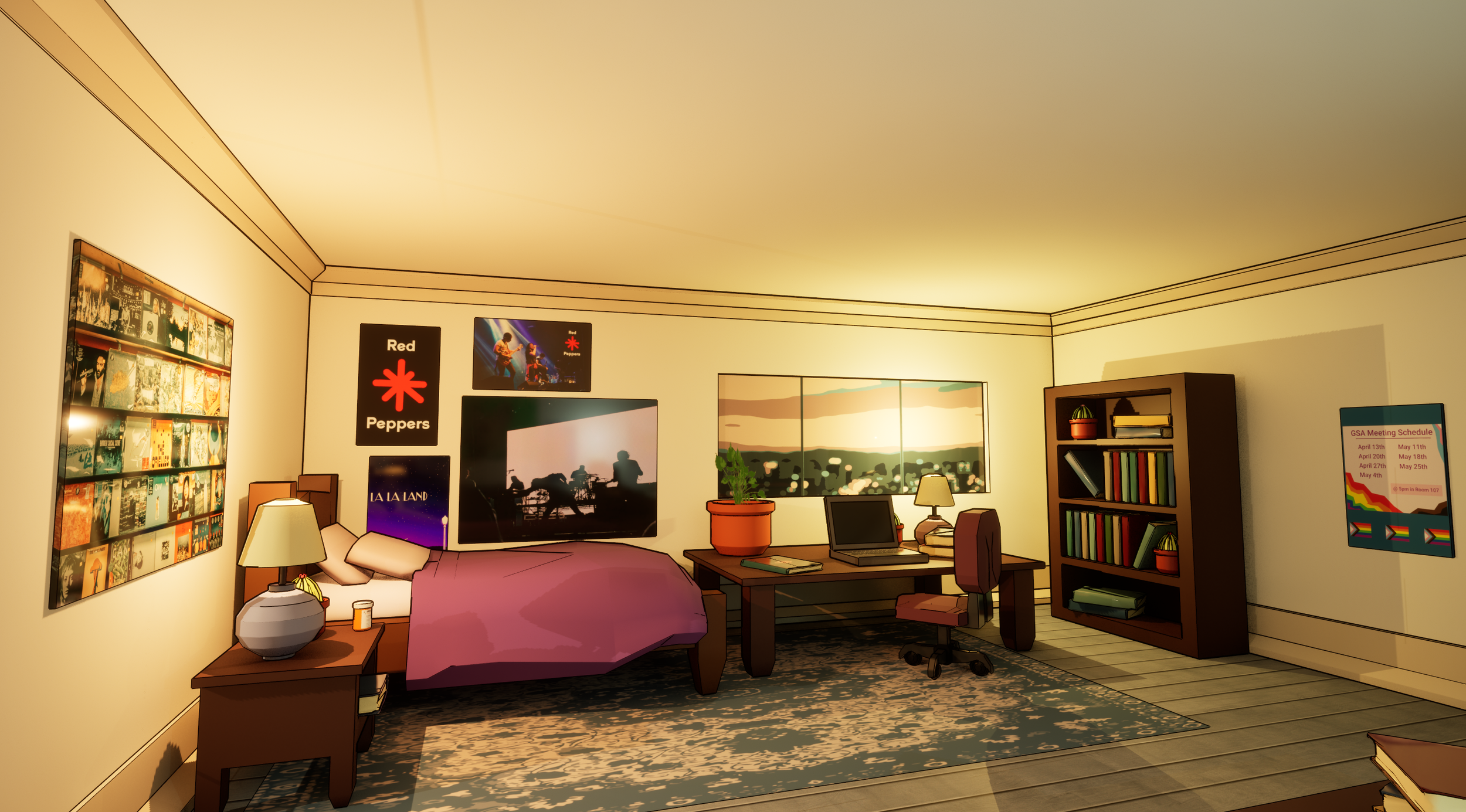Dorm Room

Project Breakdown
Introduction
Dorm Room was a very successful project that included interactivity within the environment
I created most of the models and all texturing
Some models were sourced from Quixel and the Unreal Engine Marketplace which includes closed books, animal bones, moose toys, the shelf, and boxes.
I used an interesting shader (sourced from the Unreal Engine Marketplace) that creates an outline along the edges of my meshes, creating a sketched or drawn effect
The goal of this project was to test player’s ability to determine gender which was more accurate than I had expected
Test Results
On the left side of the room (blue bed) is someone who identified as someone who is male
On the right side of the room (purple bed) is someone who identifies as a trans woman and is currently transitioning medically and socially
83.3% of people correctly identified the character’s gender on the left side of the room (blue bed)
66.7% of people interpreted the character’s gender on the right side of the room (purple bed) as nonbinary
This result was technically incorrect but also an encouraging one as players could tell at least that this character was not a cisgender person (someone who isn’t transgender)
It was interesting to see how the players navigated the room and what objects they interacted with
There was a total of 26 possible interactions
This was done using blueprints in Unreal Engine, something I am still learning more about
Grey Boxing/Concept
The start of this process was pretty fast due to the time constraint which was about 2-3 weeks
My concept was quite simple and able to be expanded upon: create a room and have players interpret the gender of the character based on that environment
Eventually, I realized that testing would be much more efficient and accurate if there was another character/room so players could directly compare living spaces
I eventually switched my concept to a shared room (a dorm room) to reflect this change and purpose









